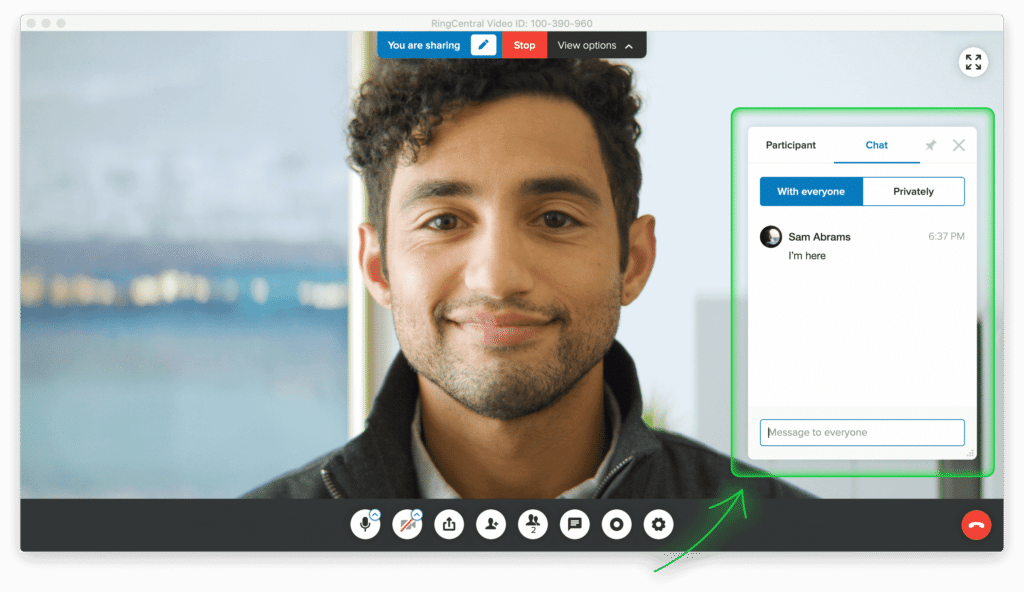If you attend or host a lot of meetings at work, you’ve probably come across a huge variety in terms of the quality of those meetings. Luckily, it’s pretty easy to improve your overall meeting culture with a few quick steps.
While some are efficient and well-planned, with enough time left over for questions at the end of the meeting, others seem to go on and on without ever reaching a point. These bad meetings tend to eat up your workday and leave you feeling unproductive or even sluggish.
It’s no coincidence that the most effective meetings tend to also be the ones with the best meeting culture.
In this article, we’ll cover:

What is meeting culture?
Essentially, meeting culture is the sum total of all your meeting practices: the good and the bad.
A good meeting will have a productive, friendly, and open culture. On the other hand, bad meetings tend to meander instead of cutting to the chase, and they typically cause more problems than they solve.
Why is meeting culture so important?
We’re going to let the numbers speak for themselves on this one.
According to a recent study, here’s how employees feel about badly run or poorly planned meetings:
The effect of poorly run meetings, according to employees
Source: Inc.com
44%
Said their productivity suffered
43%
Said unclear actions create confusion
38%
Said focus on projects diminished
The thing about meeting culture is that it’s almost always a reflection on company culture as well. A company that can’t run meetings effectively generally can’t organize other company affairs effectively, either.
The question then becomes how to run a great meeting. Thankfully, it’s easy to improve your overall meeting culture—all you’ve got to do is follow the tips laid out below.
Symptoms of bad meeting culture
Read this list of meeting missteps. If your meetings have any of the following symptoms, it might be time to reevaluate your meeting culture:
Agendas aren’t sent ahead of time (or used at all)
Agendas set both the expectations and pace of a meeting. Without knowing what’s on the docket, and how much time is allotted to each discussion topic, it can be hard to stay on track and get everyone moving in the same direction.
On the other hand, when people know what to expect, they can also come prepared to discuss, and that means you don’t need to get everyone up to speed during precious meeting time.
The wrong people are invited
It’s just about impossible to get anything done without the right people in the room. We’ve all been there: you sit in the meeting for half an hour (or more), only to realize nothing can move forward without Chad from Customer Service’s input.
When you aren’t intentional about who you invite to participate, it can create a lot of unnecessary meetings that conclude with the dreaded phrase “I guess we need another meeting” and little else accomplished.
On a related note: few things feel more frustrating than being invited to a meeting that has nothing to do with your job, right? Keep this in mind, too, as you put together meetings for your team.
Meeting participation is unbalanced
A workplace is full of different personalities, and that’s a beautiful thing! Some people love to think out loud and on their feet in meetings, while others need more time to process information before chiming in. Both forms of communication are valid and necessary for great meeting culture, but sometimes a few people can monopolize the conversation.
This kind of imbalance means you could be missing out on valuable input from your team.

Meetings often run over their scheduled time
Meetings running long can be the result of any of the three issues we’ve laid out above… or all three combined, as is often the case. This isn’t something to take lightly.
If your office’s meetings routinely run over time, this can wear on your team. They might see this habit as a disregard for their own tasks and timelines, which can negatively impact employee satisfaction and retention. What’s more, since action items are usually set at the ends of meetings, you might not have everyone you need in the room if important people have to drop off for other commitments.
People leave meetings confused or frustrated
“Wait, what are we supposed to do now?”
If that’s what people sound like walking out of your meetings, even a fraction of the time, you might need to work on how to wrap up with clear action items. When it comes to next steps, the less gray area, the better.
6 tips to improve your meeting culture
We have good news. All of the above symptoms can be treated with a little more attention paid to your meeting culture. Here are some quick and easy ways to improve meetings at your business.
1. Keep a meeting agenda (and stick to it)
As it turns out, good planning is half the work to better meetings.
The easiest way to avoid unproductive meetings is to set out a crystal-clear meeting agenda ahead of time, and then to make sure that everyone sticks to it. This helps guarantee that nobody goes off-topic and that each meeting involves getting real work done.
A 2019 survey showed that most people think having clearly defined goals, as well as a clear meeting agenda, is essential to running a successful meeting.
When it comes to meeting agendas, it helps a lot if you combine the top two responses in the graphic above. That means setting out clear guidelines and notes for every agenda item, which makes the objectives and the overall agenda of the meeting clearer to every attendee.

2. Choose your attendees carefully
The first graph showed that irrelevant invitees slowed meetings down, and the second indicated that reducing the total number of meeting attendees makes for more successful meetings.
There’s merit to these points. After all, if your meeting consists of all your team members and then also three people from a completely different department whom you’ve never met before, that would probably have a negative impact on your overall teamwork capabilities.
That’s why it’s important to make sure that everyone at your meeting needs to be there and that you don’t leave out an invitation to someone who should be there.
3. Delegate meeting roles
This helps a lot when it comes to selecting your attendees. What you need to know is that every meeting needs people to fill specific roles and that having the right people take up those roles is a sure-fire ticket to more productive meetings.
You can’t run an effective meeting without meeting leaders, for example. These would be the people keeping track of the majority of the admin work for a given meeting.
You’ll also want to make sure your meetings have a facilitator, who ensures that only one person is speaking at a time. If the meeting involves using a PowerPoint presentation, your facilitator might also be the person responsible for changing slides as needed.
In short, everyone at the meeting should know exactly what their role or responsibility is, even if that role consists only of listening.
4. Adjust to the specific type of meeting
You wouldn’t treat virtual meetings exactly the same way as you would in-person meetings.
The same principle applies when you’re considering other types of meetings. A casual check-in needs a different approach than a large-scale meeting involving lots of different teams, for example.
You’d also plan differently for a meeting involving senior managers than you would for one where your attendees are all interns or fixed-term contract workers.
Each kind of meeting should be based on a specialized template. This helps guarantee that you can use meetings to their maximum potential and that each meeting is properly adjusted to its type.
5. Create more inclusive meetings
The best meetings are collaborative, where diverse minds come together and everyone feels encouraged to participate. As you plan your meeting, consider the work and personality types who are attending. This can really help improve the meeting culture.
For example: will there be lots of extroverts who might monopolize the conversation? If so, providing a way for introverts to submit questions in writing ahead of time (and feedback after) might level the playing field. Virtual meetings are great for this, because many video conferencing apps include a chat box for running commentary. Here’s how it looks in RingCentral:

Pro tip: This is just one way that video conferencing apps can create a more inclusive and accessible meeting environment for your team. Learn more easy ways to build accessibility into your business.
6. Prepare for the next meeting
Unless you’ve got a lot of time on your hands, you’re generally going to want to split your meetings up into multiple sessions.
This can work to your advantage in a few different ways. Firstly, it can be a helpful way to follow up on points discussed during previous meetings. Second, multiple meetings are a great way to check in on the progress your teams have made on projects or tasks.
Tabling a discussion for the next meeting is also a helpful way to let attendees go off to think about and/or research the topics you talked about.
Last but certainly not least, planning for the next meeting is a fantastic way to improve the level of structure your projects and assignments have. If each meeting is set up to discuss progress and the upcoming next steps, everyone will always know what they’re doing and project-based decision-making becomes significantly easier.
Better meeting culture is within reach
The better you plan your meetings, the better those meetings will go.
The key is to make sure that everyone knows what their role is, as well as what the action items of the meeting are. That way, you avoid people going off-topic or missing an important touch point for the meeting.
It’s also crucial to put in the time to prepare for any upcoming meetings, because as a general rule, meetings don’t exist in a vacuum. Make sure that your meetings follow up on points from previous ones and that they set up points for the next one(s) to follow.
When you plan your meetings well, your meeting culture will improve as a result. This can have massive positive outcomes for your company as a whole.
Looking For Startup Consultants ?
Call Pursho @ 0731-6725516
Telegram Group One Must Follow :
For Startups: https://t.me/daily_business_reads







